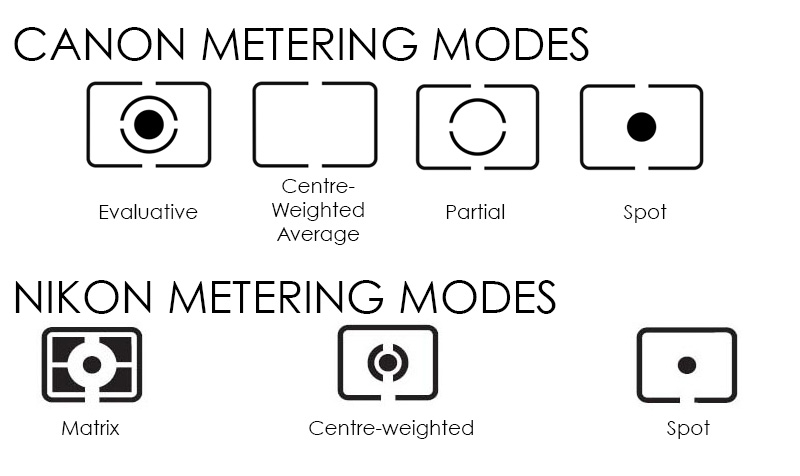Understanding Different Metering Modes

Ever heard of “metering modes”, or perhaps “camera metering”, “exposure metering”, or just “metering”? It’s a key tool in photography that contributes to the control of a photo’s exposure. It used to be the case that photographers would have to judge a situation totally by eye, or use a separate light metering device, to measure the ambient light conditions and adjust the camera settings accordingly. Otherwise, dark and light areas in a photo could appear under and overexposed.
Luckily, most modern DSLR cameras have a built-in light meter. This allows your camera to analyse the scene and optimise the exposure of the photo. If you’re shooting in semi, or full, automatic modes then metering modes will be having an effect on your photos, whether you realise it or not! It uses the readings it obtains to decide how to set the settings which it has control over. It’s useful to know what the modes do, as some will be more appropriate than others for your needs.


Matrix / Evaluative Metering Mode
The ‘default’ mode. If you’ve never touched metering mode, then chances are your camera is set to matrix metering (or evaluative for Canon users). In this case, the camera takes into account the entire scene, but places a greater emphasis on what lies beneath the focal point. This is a good way to be sure the scene is, on the whole, properly exposed. You may find that some highlights and shadows are incorrectly exposed in certain conditions.
Centre-Weighted Average Mode
Unlike matrix or evaluative metering, the centre-weighted average metering mode does not take your focal point into consideration. It also analyses the whole scene, but it places a strong weight on the centre of the image.
Personally, this is the mode I stick to for the majority of my images. I find that more often than not the subject is near the centre and is consequently properly exposed, whilst also ensuring the surroundings are not blown entirely.
Spot Metering Mode
Spot metering measures the intensity of light only at the focus point, ignoring the surroundings completely. This is a good mode to use in challenging lighting conditions, such as shooting with the sun behind your subject. Otherwise, you would probably find that your subject would be underexposed as the sun is so bright that it forces the exposure to be darker in any mode other than spot metering.
Partial Metering Mode
Offered by most Canon EOS cameras, partial metering is similar to spot metering. The difference being that the covered area is larger, totalling approximately 8-13% of the viewfinder (compared to 2-4% in spot metering mode).
In Conclusion
You don’t need to worry too much about metering modes, and it is not something that you will find yourself adjusting regularly. Experiment with different modes and see what alterations they make. You’ll see more differences in challenging conditions, with bright highlights or dark shadows in some parts of the image. Remember, metering modes won’t effect your settings when in full manual mode.









